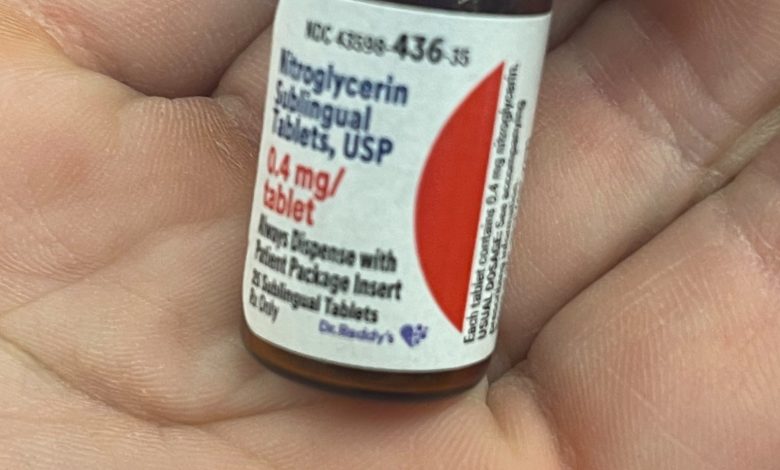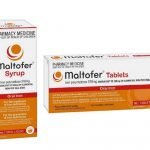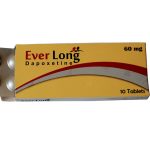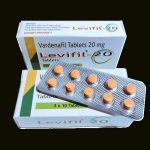Nitroglycerin: Uses, Dose, Side Effects, Interactions

What does nitroglycerin do?
Nitroglycerin is a chemical compound that is commonly for the treatment of angina pectoris, a condition characterized by chest pain or discomfort caused by reduced blood flow to the heart muscle. Here are some important points regarding the medical use of nitroglycerin:
1. Vasodilation: Nitroglycerin works by relaxing and dilating the blood vessels, particularly the veins. This dilation reduces the workload on the heart and improves blood flow, increasing the supply of oxygen and nutrients to the heart muscle.
2. Angina Treatment: Nitroglycerin is commonly used as a fast-acting medication to relieve angina symptoms during an episode. It is usually administered sublingually (under the tongue) as a tablet or spray. The medication is absorbed through the mucous membranes and quickly enters the bloodstream, providing rapid relief from chest pain.
3. Prevention of Angina Attacks: Nitroglycerin can also be used as a preventive medication to reduce the frequency and severity of angina episodes. Long-acting formulations, such as oral tablets or transdermal patches, are typically used for this purpose. These formulations release nitroglycerin slowly over time, maintaining a consistent blood concentration and helping to prevent angina attacks.
4. Other Medical Uses: Besides angina treatment, nitroglycerin may also be used in certain emergency situations, such as heart attacks or congestive heart failure, to improve blood flow to the heart. Additionally, it is sometimes used during diagnostic procedures like cardiac stress tests.
Nitroglycerin Mechanism Of Action
The mechanism of action of nitroglycerin involves its conversion to nitric oxide (NO), which is a potent vasodilator. Here’s a breakdown of how nitroglycerin works:
1. Conversion to Nitric Oxide: After administration, nitroglycerin is metabolized in the body to release nitric oxide (NO). This conversion occurs through enzymatic processes, including denitration and reaction with sulfhydryl groups.
2. Activation of Guanylate Cyclase: Nitric oxide (NO) released from nitroglycerin activates the enzyme guanylate cyclase in smooth muscle cells.
3. Increased cGMP Production: Activation of guanylate cyclase leads to the production of cyclic guanosine monophosphate (cGMP) from guanosine triphosphate (GTP).
4. Smooth Muscle Relaxation: Elevated levels of cGMP cause smooth muscle cells in the blood vessels to relax. This relaxation primarily affects the venous system, leading to the dilation of veins. The relaxation of veins reduces venous return and decreases the amount of blood returning to the heart (preload). As a result, the workload on the heart is reduced, and the oxygen demand of the heart is decreased.
5. Improved Blood Flow: The dilation of veins reduces the pooling of blood in the venous system and lowers the pressure within the veins. This decreases the pressure against which the heart must pump, resulting in improved blood flow to the heart and throughout the body.
By dilating blood vessels, nitroglycerin improves blood supply to the heart muscle, relieves angina symptoms, and reduces the frequency and severity of angina attacks. Nitroglycerin’s vasodilatory effects also extend to other blood vessels, such as the coronary arteries and arterioles, contributing to increased blood flow in these areas.
It’s important to note that nitroglycerin’s mechanism of action is complex, and its precise effects can vary depending on factors such as the dosage, route of administration, and individual patient characteristics. The medication should only be used as directed by a healthcare professional.
Nitroglycerin Dosage Forms
Nitroglycerin can be taken in different forms depending on the intended use and the severity of the condition being treated. Here are the common methods of administering nitroglycerin:
1. Sublingual Tablets: This is the most common and fastest-acting form of nitroglycerin. Sublingual tablets are designed to be placed under the tongue, where they rapidly dissolve and are absorbed into the bloodstream. This method allows the medication to bypass the digestive system and enter the circulation directly. Sublingual nitroglycerin is commonly used to provide quick relief during angina episodes. It is important to follow the specific instructions provided by the healthcare professional regarding the dosage and frequency of use.
2. Sublingual Spray: Nitroglycerin can also be administered in the form of a spray. The spray is applied under the tongue, and the nitroglycerin is absorbed through the mucous membranes. The spray provides rapid absorption similar to sublingual tablets and is an alternative for individuals who have difficulty swallowing or who prefer a spray over a tablet.
3. Transdermal Patches: Transdermal nitroglycerin patches are designed to deliver a controlled release of the medication through the skin over an extended period. The patch is applied to a clean, dry area of the skin, typically on the chest or upper arm. The medication is absorbed gradually into the bloodstream, providing a continuous effect. Transdermal patches are often used for the prevention of angina attacks and are usually worn for a specific duration as directed by the healthcare professional.
4. Oral Capsules or Tablets: Nitroglycerin is available in oral form as well. These formulations are swallowed and absorbed through the gastrointestinal tract. Oral nitroglycerin is typically used for long-term preventive treatment of angina and may have a slower onset of action compared to sublingual administration.
It’s important to remember that nitroglycerin is a prescription medication, and the specific dosage and method of administration should be determined by a healthcare professional based on individual needs and medical conditions.
Nitroglycerin Dose
The appropriate dose of nitroglycerin can vary depending on the specific medical condition being treated, individual patient factors, and the formulation of the medication. It is crucial to consult with a healthcare professional for accurate dosing instructions. That being said, here are some general guidelines for common forms of nitroglycerin:
1. Sublingual Tablets or Spray: For acute relief of angina symptoms, the typical initial dose of sublingual nitroglycerin is 0.3 to 0.4 mg. The tablet or spray is placed under the tongue, and if needed, another dose can be taken every 5 minutes for up to three doses. However, it’s important to follow the instructions provided by the healthcare professional and not exceed the prescribed dosage.
2. Transdermal Patches: Transdermal nitroglycerin patches come in different strengths, and the appropriate dosage will be determined by the healthcare professional based on individual needs. The patch is usually applied once a day and left in place for a specific duration, typically 12 to 14 hours, before being replaced. It’s important to follow the instructions for patch application, rotation of application sites, and timing of patch changes.
3. Oral Capsules or Tablets: The dosage of oral nitroglycerin varies depending on the formulation and the specific condition being treated. The healthcare professional will determine the appropriate dosage and frequency for long-term preventive treatment of angina. It’s important to take the medication as directed and not adjust the dosage without medical advice.
How long after taking nitroglycerin can you drink water?
There are no specific restrictions on drinking water after taking nitroglycerin. Nitroglycerin is typically taken sublingually (under the tongue) or swallowed as oral tablets or capsules. After taking nitroglycerin sublingually, it is generally recommended to avoid eating or drinking until the medication is fully absorbed, which usually takes a few minutes. This allows the nitroglycerin to be absorbed properly through the mucous membranes under the tongue.
However, after the medication has dissolved or been swallowed, there is typically no specific waiting time before drinking water or consuming other liquids. It’s generally safe to drink water after taking nitroglycerin, as long as it has been properly absorbed.
That being said, it’s always a good idea to follow the instructions provided by your healthcare professional or the medication’s label. If you have any specific concerns or questions about taking nitroglycerin or its interaction with other substances, it’s best to consult with a healthcare professional for personalized advice.
Nitroglycerin Side Effects
Nitroglycerin, like any medication, can cause side effects. The severity and occurrence of these side effects can vary from person to person. Common side effects of nitroglycerin may include:
1. Headache: Headaches are one of the most common side effects of nitroglycerin. The headaches can range from mild to severe and may be accompanied by dizziness or lightheadedness. These headaches are typically temporary and often diminish with continued use of the medication.
2. Flushing: Nitroglycerin can cause flushing, which is a warm sensation and redness of the skin, particularly in the face and neck. Flushing is usually mild and transient.
3. Low Blood Pressure: Nitroglycerin can cause a decrease in blood pressure, leading to symptoms such as dizziness, lightheadedness, and even fainting. It is more likely to occur with higher doses or if you stand up too quickly. It is important to change positions slowly and be cautious when getting up from a sitting or lying position.
4. Fast Heartbeat: Nitroglycerin can sometimes cause an increase in heart rate (tachycardia) or irregular heartbeats (arrhythmias). These effects are usually temporary and resolve on their own.
5. Nausea: Some individuals may experience mild nausea or an upset stomach when taking nitroglycerin. This side effect is usually temporary and may subside with continued use.
6. Allergic Reactions: While rare, allergic reactions to nitroglycerin can occur. Symptoms may include hives, itching, rash, swelling, difficulty breathing, or chest tightness. If you experience any signs of an allergic reaction, seek immediate medical attention.
It’s important to note that these are not the only possible side effects of nitroglycerin. Some individuals may experience other less common side effects or have individual-specific reactions. If you have concerns about the side effects of nitroglycerin or experience any unusual symptoms, it is recommended to consult with a healthcare professional for further evaluation and guidance.
Interactions
Nitroglycerin can interact with other medications, potentially affecting their effectiveness or increasing the risk of side effects. It’s crucial to inform your healthcare professional about all the medications you are taking, including prescription drugs, over-the-counter medications, and herbal supplements. Here are some examples of drug interactions that can occur with nitroglycerin:
1. Phosphodiesterase-5 (PDE-5) Inhibitors: Drugs like sildenafil (Viagra), tadalafil (Cialis), and vardenafil (Levitra) used for erectile dysfunction or pulmonary hypertension can interact with nitroglycerin and cause a severe drop in blood pressure. Combining these medications can lead to dizziness, lightheadedness, fainting, or even a heart attack. Nitroglycerin should not be used within 24 hours of taking these PDE-5 inhibitors.
2. Blood Pressure Medications: Medications used to treat high blood pressure, such as beta-blockers, calcium channel blockers, and ACE inhibitors, may enhance the blood pressure-lowering effects of nitroglycerin. Your healthcare professional will monitor your blood pressure closely if you are taking these medications together.
3. Other Vasodilators: Combining nitroglycerin with other vasodilators, such as hydralazine or minoxidil, can increase the risk of severe low blood pressure. Close monitoring is necessary if these medications are used concomitantly.
4. Antiplatelet Drugs: Nitroglycerin may enhance the antiplatelet effects of drugs like aspirin, clopidogrel, or ticagrelor. This can increase the risk of bleeding. Close monitoring and adjustment of doses may be needed.
5. Diuretics: Nitroglycerin can enhance the blood pressure-lowering effects of diuretics (water pills), which can lead to low blood pressure. Regular monitoring of blood pressure is important when using these medications together.
These are just a few examples of potential drug interactions with nitroglycerin. There may be other medications, including herbal supplements, that can interact with nitroglycerin. Always consult your healthcare professional or pharmacist for a comprehensive list of possible drug interactions and follow their advice to ensure the safe and effective use of nitroglycerin.





